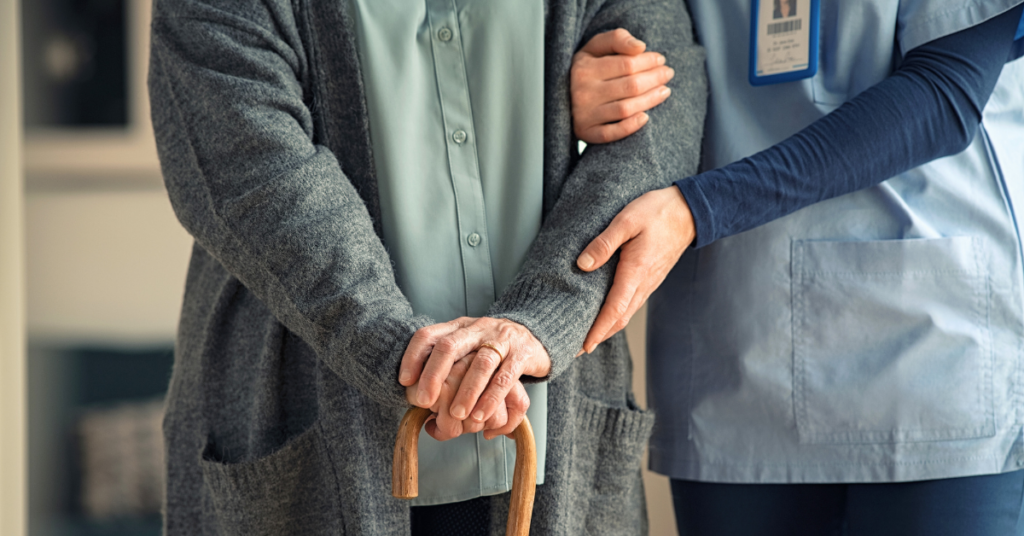
If you’ve never visited an aging relative or family friend in a senior living facility, you might not intuitively understand the danger associated with residents wandering off, particularly those experiencing some level of dementia. According to the Alzheimer’s Association, six in 10 people living with dementia will wander at least once and many will do so repeatedly.
Staff can only do so much; to state the obvious, they’re outnumbered. Even lobby attendants can’t always be at their station with their eyes on the door. This is where security systems come in–playing a vital role in ensuring residents’ safety and well being. Security systems also provide peace of mind for the people who have entrusted their beloved seniors to a facility’s care; as such, they have become essential components in the management of such environments.
Understanding the Needs of Seniors
It’s no secret that age inevitably takes its toll on our ability to function on a daily basis; it’s the reason senior living facilities exist. There are, of course, many vulnerabilities the average senior may face. Cognitive impairments, such as dementia, and physical impairments, such as decreased mobility, top the list–each affecting an individual’s ability to make safe decisions and/or successfully navigate the kinds of physical obstacles younger people take for granted.
More specifically, risks and vulnerabilities for seniors include:
- Falls: A leading cause of injury among seniors, falls can result in serious consequences of all kinds, including bone fractures and head trauma.
- Medical Emergencies: Heart attacks. Strokes. Sudden illness of all kinds is increasingly possible in old age, requiring quick medical attention.
- Wandering: Seniors with cognitive impairments can wander off, putting themselves at risk of getting lost or encountering dangerous situations.
- Unauthorized Access: Ensuring that only authorized personnel and visitors enter the assisted living facility is critical to ensuring residents stay safe.
Types of Security Systems in Senior Living Facilities
When thinking about making a safe and secure environment for residents, these are the four pillars to prioritize:
Door Access Control Systems
Door access control systems encompass such things as key cards and biometric scanners, ensuring that only authorized individuals can access certain areas of the facility. Visitor management means closely monitoring and controlling visitor access, which helps prevent unauthorized entry to the primary living space.
Surveillance Camera Systems
The best monitoring cameras for elderly individuals are those that are strategically placed–extending the eyes of staff. But while surveillance camera systems are increasingly ubiquitous in many areas of life, it’s important to balance the need for surveillance with the privacy rights of the surveilled. This includes seniors.
Emergency Response Systems
Emergency response systems are for those times there’s a medical situation that needs attention. Stat. Personal emergency response systems allow residents to call for help by simply pushing a button on a worn device, typically a pendant.
Nurse call systems allow residents to easily alert staff to a sudden emergency. And fall detection technologies automatically detect falls, notifying staff without the resident having to take any action, which the resident may be unable to do.
Environmental Controls
Environmental controls are important at any age and in any residence, but they’re undoubtedly more important to those in assisted living facilities, who may be slower to recognize or respond to environmental hazards. As such, fire alarms and carbon monoxide detectors are essential for ensuring residents’ safety. And emergency lighting can make all the difference during fires or power outages, providing residents much-needed visibility and also aiding in safe evacuations.
Benefits of Security Systems
For an assisted living facility operator, it all rolls up to this. Following are the four key benefits to having a well-thought out security system in place:
Enhanced Safety
Comprehensive security systems help prevent incidents, enable quick emergency responses, and counter unauthorized access–enhancing residents’ overall safety.
Peace of Mind
Knowing that proper security measures are in place is reassuring to residents and their families, who trust that their loved ones are living in a safe environment.
Operational Efficiency
From low tech to high tech, these kinds of comprehensive systems streamline monitoring, so staff can more efficiently manage their time and their duties.
Regulatory Compliance
Regulations for assisted living facilities aren’t going anywhere. Security systems are essential in helping facilities meet local, state, and federal safety standards.
Implementation and Maintenance
By doing your homework–and your system upkeep–you’ll help ensure the safety of your residents and the reputation of your facility now and into the future. Following are four aspects to consider as you look into building out a good system:
Assessment and Planning
Time spent upfront evaluating the specific needs of your senior living facility, leading to a well-tailored security plan, will pay dividends for a long time to come.
Installation Best Practices
Every field and every profession has a set of best practices to follow to get the job done right. Ensuring minimal disruption to the facility during setup and providing comprehensive training to staff are just two of the best practices essential for the successful implementation of an assisted living facility security system.
Ongoing Maintenance
This may not be as engaging as getting the system set up in the first place, but regular checks, updates, and continuous staff training will go a long way toward ensuring your security system remains functional and effective over the long haul.
Do It for Them, Do it for You
Enhanced safety. Peace of mind for residents and families. Operational efficiency. Regulatory compliance. Security systems have become essential in the management of senior living facilities–in safeguarding residents’ well-being and fostering a secure and supportive living environment. Facility administrators and stakeholders owe it to their residents, and to themselves, to prioritize a security system that efficiently and effectively does all of the above.
